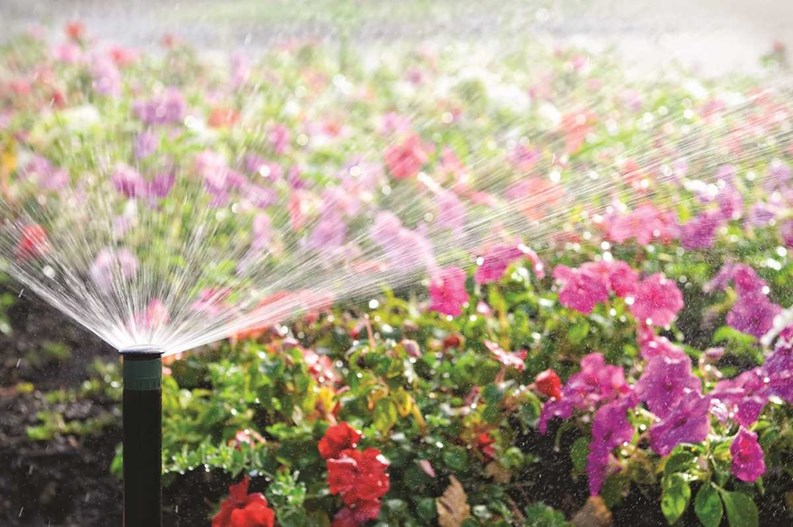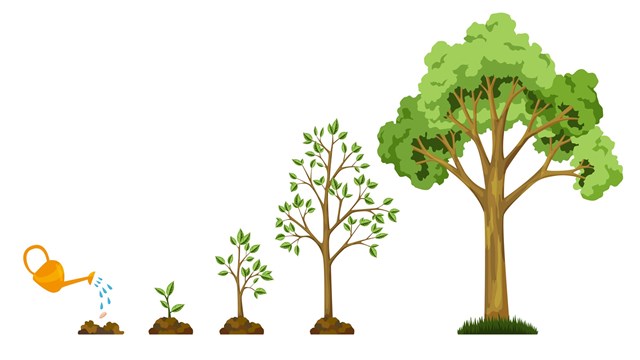Keeping lawns, trees, bushes and flowers healthy is an association goal for nearly all condos and co-ops; notwithstanding, effective landscaping management is essential. Aside from the sun and soil rich in nutrients, the key to remaining “green” is water access. Depending on the location of an association, H20 can be a sporadic resource requiring the implementation of irrigation technologies that require maintenance and oversight.
“Central and Northern New Jersey are the most irrigated regions because of a more dense population, although any property in the state would require some form of irrigation to maintain a lush and healthy landscape, especially in the critical summer months,” says Christopher Venneri, owner of Advantage Irrigation in South River. “The least irrigated areas, to my experience, are usually shore towns…due to the fact that many of the homes are vacation and rental properties, so most are looking for low maintenance, low water-usage solutions that will still look nice.”
Irrigation Association of New Jersey Board Member Art Elmers says that, save a few exceptions, New Jersey’s climate is fairly uniform over the entire state. Average temperature, rainfall, and days of sunlight are almost identical everywhere; therefore, the amount of water required to grow a healthy begonia is the same in Cape May County as Sussex County.
“The exceptions are if you are growing that same begonia on the dunes at Long Beach Island with a prevailing wind or in the shade of the tall buildings found in Newark,” says Elmers. “These site conditions affect plant water requirements to some degree.”
Elmers agrees with Venneri that regions in proximity to New York City and Philadelphia see higher levels of irrigation, and for good reason as there is more water consumption in these communities.
“Landscaped residential properties, public playing fields and parks, multi-dwelling complexes and office parks with large expanses of turf grass and expensive landscape plantings are where a good portion of the state’s available water is utilized,” says Elmers. “The beautification and sustainability of these areas accounts for most landscape irrigation water used.”
A Changing Industry
Jason Clarke, maintenance account manager with Borst Landscape and Design in Allendale, says over the last two decades, the irrigation industry has dramatically changed.
Today’s irrigation products, he notes, are designed for water conservation and uniform water distribution. Materials, such as the irrigation heads, have been designed to better distribute water. For example, the nozzle in the head, as well as the head itself, are shaped and designed to allow the installer to regulate the amount of water applied, as well as area covered. Additionally, irrigation system clocks are designed to more efficiently control the timing of the watering, which allows the user the ability to program according to the specific needs of the plant material and any local water regulations.
“These, and other upgrades to materials involved with irrigation systems, allow the installer and designer the ability to water specific areas with precise amounts of water,” says Clarke. “The way a system is designed and installed can dramatically affect the performance and effectiveness of the system itself.”
Elmers adds that New Jersey mandates all new irrigation systems include a rain shut off device, which minimizes watering during a rain event. “As an industry, irrigators were not applying water efficiently. With increased pressure on our limited water resources, how could the industry keep doing this? The answer was that the industry needed to move towards applying only the irrigation water needed.”
While conservation is viewed as a positive development in the irrigation industry, advancements and new technologies have caused concerns to certain professionals, as well. Venneri says a leading drawback is using treated potable water to maintain landscapes, especially turfs that use the largest amounts of water.
“Yes, the water is going back into the ground to feed the cycle, but the cost of treating the water is great, both financially and environmentally,” says Venneri. “In the coming years, we will see a rise in the use of reclaimed, non-potable, or grey water systems; as it stands now, there is just not the infrastructure to do this, but with the cost of providing and treating water rising, I believe this will change.”
For homeowner associations, landscaping needs and the need for irrigation practices will differ from property to property. Sometimes, these differences can occur when properties are located within miles of one another, even. Topography, erosion, and soil composition are critical variables. Landscape and irrigation professionals have to determine the amount of water needed for an area, the size and shape of an area being irrigated, as well as type of plant material. Knowing the irrigated area is critically important to the designing of the system, according to Clarke. Striking a balance between innovation and the environment, however, remains a challenge.
“As much advancement as there has been in the irrigation field, there are still drawbacks for the environment. Installation of irrigation systems still disrupts the soil and the added water from the system can lead to increased erosion that was not part of the environment before,” says Clarke. “Introduction of water from another area can sometimes pose a problem as well. Water from another part of the state with different contaminants can alter the environment.”
According to Clarke, there are a few general rules of irrigation. For example, rainfall and temperature averages of an area impact the need for irrigation; a region with a higher average rainfall and a lower average temperature is less in need of an irrigation system. Additionally, the amount of certain materials, such as clay and sand in the soil, are critical variables.
For instance, the more sand in an area, the better the drainage through the soil will be. As a result, more water is needed to sustain plant material.
“Irrigation systems are usually installed by people (or organizations) who have the extra finances to afford it,” says Clarke. “Having a professionally installed irrigation system has an expense associated with it.”
Generally, modern irrigation practices minimize adverse environmental impacts, especially when properly designed, installed, and maintained. This collective practice limits environmental damage from runoff as healthy landscape reduces erosion and can lead to a healthier lifestyle for residents.
“No runoff means that fertilizers and pesticides remain on the property, and not in the streams or rivers. For society, tests have demonstrated that our bodies produce steroids that induce feelings of wellbeing after only twenty minutes of exposure to healthy green plants (landscapes),” says Elmers. “These are the same steroids produced after forty minutes with your close circle of friends. That is why modern office buildings are trying to bring the outside in. This is probably also the reason why people love their yards, parks, and other green spaces.”
Green Thumbs and Experienced Hands
The size and scope of a property will dictate the amount of water needed for all seasons. In most cases, an association will work with a residential design firm. These professionals will identify the sources of water, water pressure, soil types, slopes, prevailing winds and other site specifics to determine an appropriate plan.
“Since 1994, irrigation installations and service in New Jersey must be performed by a state licensed landscape irrigation contractor,” says Elmers. “These irrigation contractors have worked as an apprentice for at least three years, passed a written examination, and must take continuing education classes to maintain their license.”
Venneri explains that a property that is interested in having an irrigation system installed will normally have the design drawn up by a certified irrigation designer who selects the materials and builds the design in a computer-aided design (CAD) program. From that point, the designer invites companies to bid on that design.
“When you bid you take the blueprint and count of all materials required, figure the amount of labor and how much time it will take to complete, set your price and hand it in. In some instances, there is not an open bid, so I will take a copy of the site plan to a designer and discuss what I am looking to do on site and they will draw up an efficient site design based on information and material preferences,” says Venneri.
“From that point I will deliver a quote to my client,” Venneri continues. “Designs can also change on the job, sometimes due to the fact that the sites are not always built as they are displayed on the original plan; in these cases, we make a field decision and design accordingly, then we mark on blueprint what was changed and why.”
Including experts in the planning is essential to success. Clarke says that while well-intentioned, often individuals and organizations make many mistakes with landscape and property management.
“Many homeowners, whether private or part of an association, often incorrectly use their irrigation system. One of the most common mistakes is overwatering. The common misconception is that if the grass is not green, turn the amount of time the water is on up,” says Clarke. “This is often not the case as there are many other factors that can cause the weakening or discoloration of turf, such as level of nutrition. Also, sometimes simply changing the nozzle on a few heads can correct a watering issue in a certain area.”
Clarke said contacting a professional even once to gain a better understanding of best practices, could make a world of difference. “Even if the homeowner wants to run the system it is important to consult a professional at least once a year to make sure the system is running efficiently,” he says.
For board members and managing agents unsure of the best practices, according to Venneri, there are a number of resources available for education on landscape and irrigation practices.
“To name a few there is the Irrigation Association (Irrigation.org), Irrigation Association of New Jersey (IANJ.com), EPA Watersense (epa.gov/watersense), and the American Society of Irrigation Consultants (asic.org),” says Venneri. “First and foremost, they should consult a licensed professional for any questions or concerns they have regarding their landscape and irrigation systems.”
W.B. King is a freelance writer and frequent contributor to The New Jersey Cooperator.







Leave a Comment